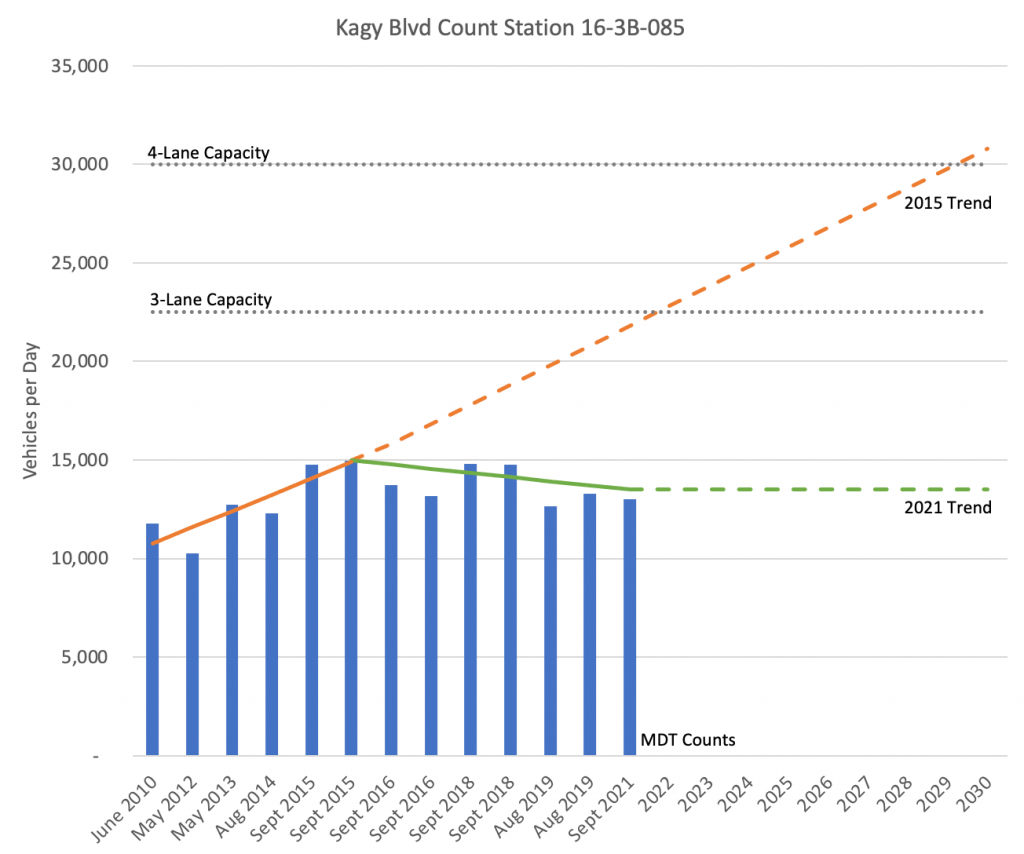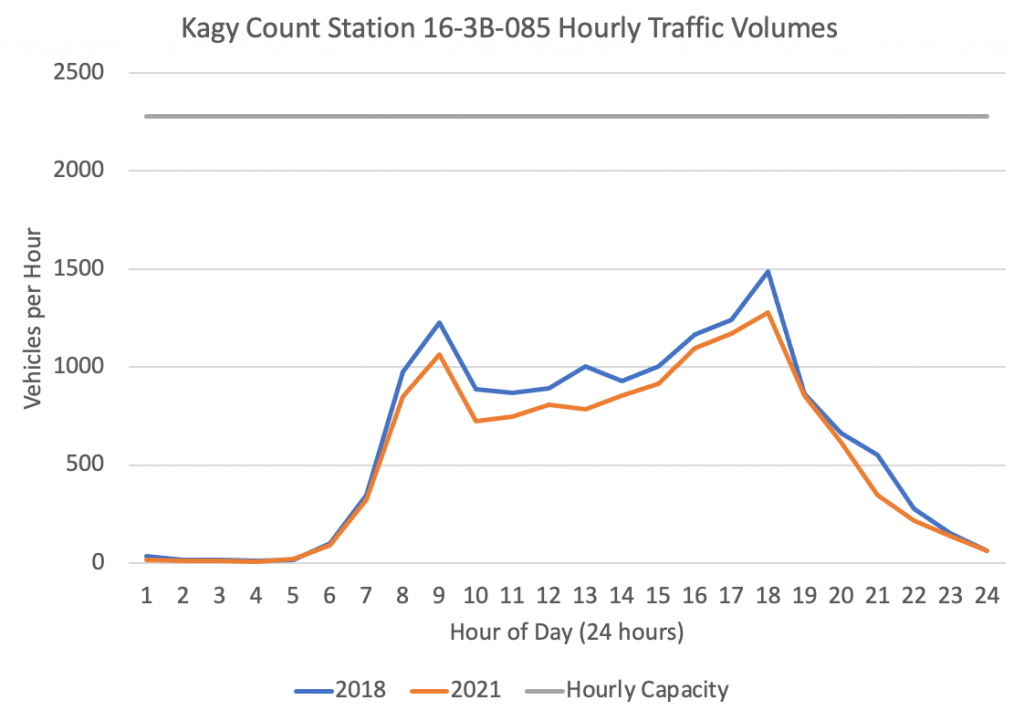The City of Bozeman’s Capital Improvement Plan item SIF009 allocates nearly a year’s worth of transportation budget to widening Kagy, justified by doomsday forecasts of apocalyptic traffic and delay. Not only has this traffic failed to materialize—the trend is actually going the opposite direction.
From an auto-centric engineering perspective, widening Kagy may have made sense based on the information available in 2016. Based on the best available traffic data since, there’s no longer any justification for widening the roadway.
The 2007 Greater Bozeman Area Transportation Plan (page 9-3) includes a table of target capacities for roadways of various types:

Volumes up to 22,500 vehicles per day are considered “ideal management conditions” for a three lane facility. Based on the trend through 2015 (see graph below), it once seemed plausible that the three-lane capacity would be eclipsed within a few years of the project completion (see forecast, below). Based on current information, however, there is no suggestion that three lanes will be inadequate any time soon (if ever). Ever since Graf Street opened, the upward trend in traffic volumes on Kagy has completely disappeared.

Moreover, transportation pundits are predicting a permanent reduction in peak hour travel demand due to flexible work schedules and work from home impacts of the pandemic. This matters since peak hour volumes typically drive traffic engineering decisions (even the busiest roads usually have ample capacity all but a few hours per day).
Zooming in on the count data, we see that not only are total volumes down since Graf Street opened, but that pandemic-era peak hour traffic volumes (relative to total daily volumes) have declined by an even greater margin:

Compared to 2018, 2021 Kagy volumes between 3 – 5 pm are only ~70 vehicles per hour lower (6%), but 5 – 6 pm (peak hour) volumes are 212 vehicles lower (14%).
It’s clear in the data that improving our road network elsewhere coupled with reduced peak hour traffic from COVID-19 has eliminated any suggestion of need to widen Kagy to four lanes. When Opportunity Way connects to 19th it’s likely that volumes on Kagy may decline further.
Nothing about current traffic volumes or trends suggest any sort of urgency for completing this project. Widening Kagy will make our system worse for pedestrians and cyclists crossing Kagy to reach campus. Based on current traffic counts, it’s not clear that widening Kagy would even benefit motorists.
At its CIP meeting on Tuesday, City Commission should send Kagy for another round of design (and to move it to the unscheduled column). In its place, the city should move forward design and construction of SIF157 and SIF158 (College Street reconstruction, to include sidewalks and bike lanes) and to send Church Street (SIF165) for preliminary design. These projects will move the needle in support of Bozeman’s goals for providing an effective transportation network for users of all modes.
